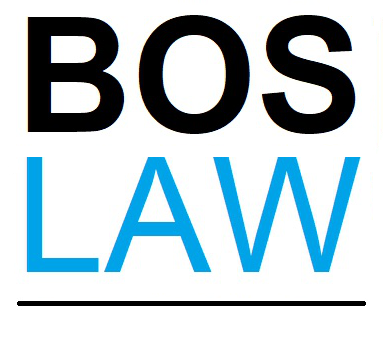
COPYRIGHT
What is the first thing I need to do?
Stop! Don’t share your FANTASTIC creative work with anyone! (ok, you can show mom…) Of course I think you should share, it’s just VERY important and VERY time sensitive to get copyright protection for your creative works. Federal law provides us with strong tools to protect your rights in your work, but ONLY if the work is registered with the copyright office. (17 U.S. Code § 412, in fact you can’t even sue without registration) Having your registration BEFORE there is an infringement allows the option of statutory damages and attorney fees (statutory damages are money you can receive even if you can’t show you were financially harmed! see 17 U.S. Code § 504). These legal tools are lost after that. If you have published your work the law does allow you a three month window to get that registration (that’s good news). What constitutes “publication” isn’t always clear so Chat with me if you want to talk this through, and read on to Learn Even More.
Just what is copyright, anyway?
Copyright is the bundle of rights you have in that BRILLIANT thing you’ve created and it’s yours BECAUSE YOU CREATED IT. Now, only those things “reduced to a tangible medium of expression” can be protected, so not the ideas in your head. Once created, that bundle of rights you have in your creative product is extensive. Among other things you have the right to reproduce it, to display it, to perform it, to make new things based on it (derivative works), plus the right to license or assign these rights away (some of them, all of them, permanently, temporarily, you decide! This is the LICENSING part). Ok, perhaps it’s not all about the cheddar for you. That’s cool, still I encourage you not to completely give up control. Take a look at something like Creative Commons licensing. This is a simple and popular way of sharing your creative works the way YOU want to share them. Let’s chat about what is important to you NOW.
So, it’s not a trademark?
NO, TRADEMARKS ARE DIFFERENT. Trademarks are “source indicators.” The swoosh on your shoes, the siren on your coffee cup (yeah, it’s a siren, not a mermaid)… these are indicators of the source of the goods or services. But, guess what? Logos are creative product, aren’t they? Get them registered and protected under copyright!
How do I get a copyright in my work?
Honestly, you already have it if you made it. But, without copyright registration, you can’t effectively enforce those rights. YOU can go to the US Copyright Office and get started right now! I’m more than happy to do it for you, of course. If it is straight forward, like a single photo, it isn’t TOO hard, if it is a collaborative work (like a children’s book with a separate author and illustrator) then things can get quite interesting. Let’s talk about it.
I don’t really need this; my work isn’t that creative or, ya know, good.
Now, now. Let’s leave that up to the people who want to buy it! ;-) Some yardstick of “quality” doesn’t exist, and the bar for “creativity” is wicked low! My argument is that we protect it now, and decide later what it may really be worth. If you must, reread the first paragraph above where I talk about giving up lucrative and enforceable federal statutory rights by deciding that you don’t need protection now for whatever reason. That window closes so fast.
My new best friend is generative AI.
Above I said that the bar for creativity is low. So low that it’s tough to find. Well, we found it. Check out the guidance provided buy the US Copyright Office. (tl;dr) Can you use AI to create stuff? Yes. Can you then get copyright protection in what’s produced? Not likely. If what you enter in your AI bot sounds a lot like the instructions you would give to a hired artist then it will certainly lack the requisite creativity. If you combine that product with something YOU author then you likely CAN get copyright protection for the whole thing (but not the AI generated elements).
So, I was at work and I created this cool…
WAIT! Work is involved? Then we really should have a quick chat. If what you produced was in the course of your employment there is a good chance it isn’t yours. Also, if you produced something specifically for someone else and you were compensated for it then it’s possible that it isn’t yours but DO NOT release your rights just because you were paid! The “work made for hire” concept is more limited than most people realize. Let’s chat about the situation and come up with a solution that gets your clients what they paid for and retains as many rights for YOU in your work as possible. Often this is managed with a licensing agreement of some sort. Don’t let it sound complicated; it doesn’t have to be.
I should have an NFT, right? Er … what is that, anyway?
Non fungible tokens (NFT’s) use blockchain distributed ledger technology (like crytocurrency) to turn an easy to copy electronic file into something uniquely identifiable. You can still copy it, but the original is, well, the original. It’s like making a wood block print, numbering each print, then burning the block. You are left with identifiable and distinguishable works. NFT’s do that for electronic product. Yeah, that’s it. Now that you’ve associated an NFT with your individual work you can sell it or license it as a unique object. Like Beeple did. NFTs also enable the use of “smart contracts.” These constructs can be set up to trigger automatic actions under certain conditions or events. Example: subsequent sales of an NFT may trigger certain payments back to the creator. Perhaps we can finally do away with the “starving artist” paradigm! If you create then you need to know more about licensing. Go here to Learn Even More.
Now that I’ve registered my work with the copyright office the government will protect it, right?
Well, no. You will have to be vigilant and watch for infringement. You will have to enforce your rights. For the most part the government won’t do this for you (but I can help). One exception is the U. S. Customs and Border Protection. You can record your federally registered copyright with them and they have the authority to “detain, seize, forfeit, and ultimately destroy” infringing product. (so dramatic!). I’m happy to help you do this.

